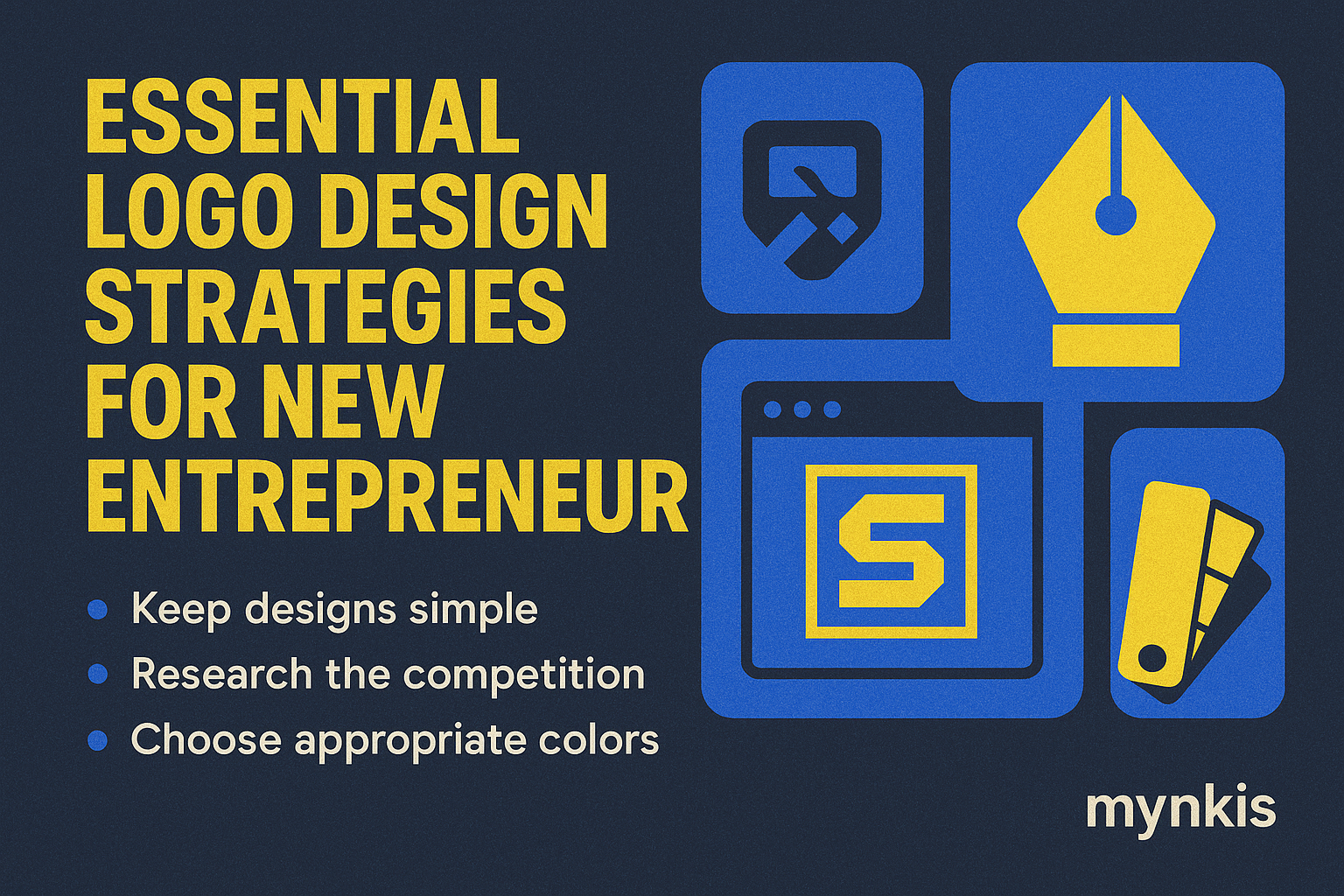Schedule a Demo
In my experience working with new business owners, the initial design of a logo can significantly impact how a brand is perceived by potential customers. As the visual cornerstone of a brand, the logo often represents the first interaction between your business and an audience. Crafting an iconic, memorable logo isn't just about creating appealing graphics; it's about establishing a strong foundation for all future marketing efforts and organic growth. Based on my insights, selecting the right tools and techniques from the start can set you on the path to seamless business recognition and success.
The digital market offers an abundance of logo design tools, ranging from simple templates to sophisticated professional software. For beginners, tools like Canva and LogoMakr offer user-friendly interfaces and pre-made elements to quickly get a logo off the ground. These tools, often highlighted by design experts such as those at Adobe, are well-regarded for their accessibility and functionality, enabling even those without a design background to create professional-looking logos.
Creating a logo involves more than just selecting an attractive font or image; it's about telling a story through design. Successful logo designers, like those recommended by the American Institute of Graphic Design, often speak of the importance of keeping the design simple and scalable to be effective across all mediums. Simplicity aids recognition, ensuring the logo remains effective from business cards to billboards.
Colors evoke emotions and convey certain qualities; a choice that significantly influences a brand’s identity. Understanding the psychology of color can guide you in selecting hues that resonate with your target audience and match your business's ethos. For instance, blue conveys trust and professionalism, ideal for industries like finance or technology. Warm colors like red and orange stir excitement and passion, perfect for sectors focused on energy or sports.
Typography isn't merely the font choice; it's another element that defines your brand identity. When designing your logo, consider how different typefaces reflect varying attitudes and moods. For instance, serif fonts often suggest tradition and reliability, while sans-serif fonts might convey a modern, approachable aesthetic. Deciding between them involves considering the vibe you want to project and who your primary audience is.
Every business should consider creating logo variants. A primary logo may serve well on your website, but iconography or monochrome versions will be beneficial in places like apps, social media avatars, or as a favicon. Exploring these variations ensures your logo's adaptability and versatility across different media and contexts.
Designing a logo can feel daunting for newcomers, and here is where the iterative process comes into play. Start with rough sketches and refine your ideas multiple times based on feedback and self-reflection. Collaborative tools like InVision and Figma provide excellent platforms for gathering input and experimenting with modifications. Remember, iteration is key in pursuit of a design that effectively captures your brand essence.
Social media platforms and communities provide a wealth of feedback which can be invaluable during the logo design process. From design forums on Reddit to the dedicated critiques section on Behance, the insights and perspectives from fellow creatives and potential customers can help refine your logo. Personal and public feedback loops, based on my observation across various client work, help enhance and evolve your design in meaningful ways.
Incorporating elements within your logo that reflect SEO strategy can attract organic growth. Use keywords related to your business in subtle ways within the logo design or even in the alt text of digital displays. I've witnessed businesses leverage this tactic on their websites to increase digital recognition and elevate search engine rankings, according to insights from search engine authorities like Moz.
Once your logo design is finalized, the journey continues. Use vector formats for scaling and implement your logo across all business collateral, ensuring uniform branding. Further, make the logo readily available in different file formats for use across various digital and print channels. This not only aids in coherent brand identity but also in maintaining professional standards across all touchpoints.
The logo is but the starting point in building a comprehensive brand identity. Every element on your custom website—from the layout to the content—must echo the vibes and ethos encapsulated by your logo. It's paramount to weave the logo's colors, symbols, and typography into a harmonious design and branding strategy that resonates with your audiences, promoting organic growth and enhancing SEO effectiveness.
As your business grows, so should your brand. Recognize that the logo and branding might evolve as market trends shift and the company adapts. Plan for periodic reviews of your brand identity strategy, potentially every two to five years, to ensure it aligns with your current business goals and remains fresh and competitive.
Resources like Skillshare and Lynda.com offer courses tailored to brand design and digital marketing, which can help entrepreneurs sharpen their brand-building strategies with custom tools for growth-oriented websites. Exploring these options can help you effectively manage and develop your brand's digital presence.
